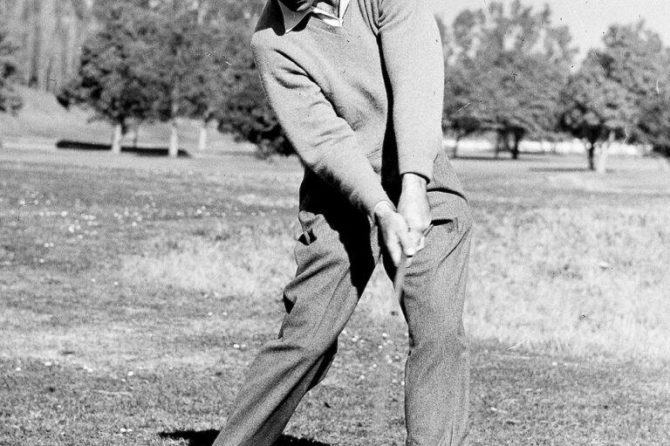John Henry Taylor, an English professional golfer, was an influential figure in the sport during the late 19th and early 20th centuries. As a member of the “Great Triumvirate” alongside Harry Vardon and James Braid, Taylor won multiple Open Championships and shaped the game of golf through his exceptional skills and innovative approaches.
Taylor’s enduring legacy can be attributed to his unwavering commitment to precision and relentless pursuit of excellence both on and off the course. He espoused the virtues of proper attire and sportsmanlike conduct, emphasizing the importance of discipline and integrity within the game. Taylor’s contributions extended beyond winning major championships; he dedicated himself to promoting golf’s accessibility, particularly among working-class communities and public courses. This article delves into Taylor’s golfing principles, exploring his impact on the sport and his lasting influence on generations of golfers.
– Taylor’s Methodical Approach to Accuracy: The Importance of Control and Consistency
Taylor’s Methodical Approach to Accuracy: The Importance of Control and Consistency
John Henry Taylor, one of the most accomplished golfers of the late 19th and early 20th centuries, was a master of precision and accuracy on the golf course. Taylor’s methodical approach to the game set him apart from his contemporaries and laid the foundation for his remarkable success.
Taylor believed that control and consistency were the key ingredients to accurate golf shots. He developed a series of drills and techniques that helped him master both aspects of his game. First, he focused on developing a solid grip that allowed him to control the clubface. Second, he emphasized the importance of a smooth, rhythmic swing that generated consistent clubhead speed. Third, Taylor advocated for a keen focus on the target during the swing, which helped him maintain accuracy even under pressure.
Taylor’s meticulous approach to accuracy paid off handsomely on the golf course. He won five Open Championships, a record that stood for over 80 years. He was also a highly successful teacher, and his methods have been passed down to generations of golfers. Taylor’s legacy as a master of accuracy continues to inspire golfers around the world to strive for excellence and precision in their games.
- Mastering the Grip and Stance: Establishing a Solid Foundation for Precision
Mastering the Grip and Stance: Establishing a Solid Foundation for Precision
Comprehending the fundamentals of grip and stance is indispensable for executing precise golf shots. John Henry Taylor, a legendary figure in the sport, emphasized the importance of establishing a stable and balanced foundation to maximize swing efficiency.
Firstly, Taylor stressed the role of the grip in controlling the club. He advocated for a relaxed but firm hold, with the hands positioned comfortably on the club. The left hand (for right-handed golfers) should cup the grip, while the right hand should overlap the left. This interlocking grip provides stability and allows for precise clubface control.
As for the stance, Taylor believed in a balanced and athletic position. The feet should be shoulder-width apart, with the weight evenly distributed. The knees should be slightly bent to ensure stability and flexibility. The spine should be straight and the shoulders relaxed. By adhering to these guidelines, golfers can develop a solid grip and stance that will enhance their ability to execute controlled and accurate shots.
– The Precision of the Swing: Achieving Maximum Distance and Accuracy
****
The essence of distance and accuracy in golf lies within the intricate mechanics of the golf swing. John Henry Taylor, the legendary five-time Open Champion, placed utmost importance on precision and consistency in every aspect of his swing.
Taylor believed that the golf swing should be a seamless and controlled motion, devoid of any unnecessary movements or abrupt changes in tempo. He emphasized the significance of maintaining a steady head throughout the swing, allowing the club to move smoothly along the intended path. A firm grip on the club, coupled with an unwavering focus, enabled Taylor to impart maximum power and accuracy to his shots.
To achieve optimal distance, Taylor accentuated the importance of a full and fluid backswing, maximizing the clubhead speed through the impact zone. Simultaneously, he advocated for a controlled follow-through, allowing the club to extend fully after impact, thereby imparting additional momentum to the ball.
<table>
<thead>
<tr>
<th>Key Principles</th>
<th>Impact on Swing</th>
</tr>
</thead>
<tbody>
<tr>
<td>Steady Head</td>
<td>Provides stability and control</td>
</tr>
<tr>
<td>Firm Grip</td>
<td>Ensures maximum power transfer</td>
</tr>
<tr>
<td>Full Backswing</td>
<td>Maximizes clubhead speed</td>
</tr>
<tr>
<td>Controlled Follow-Through</td>
<td>Imparts additional momentum</td>
</tr>
</tbody>
</table>
```<h2 id="the-art-of-putting-finesse-and-technique-for-exceptional-results">- The Art of Putting: Finesse and Technique for Exceptional Results</h2>****
**The Mechanics of Optimal Golf Swing Posture:**
Proper golf swing posture forms the foundation for an efficient and powerful swing. This article delves into the mechanics of optimal posture, highlighting the importance of hinging from the hips while maintaining a straight back. By allowing the arms to hang naturally, golfers can create the ideal angles for a consistent and effective swing. Furthermore, this article examines the interplay between posture, swing mechanics, and ball impact, emphasizing the critical role of proper posture in maximizing swing accuracy and distance. Understanding these mechanics empowers golfers to refine their technique and improve their overall performance.
**Key Principles:**
- Hinge from the hips
- Maintain a straight back
- Allow arms to hang naturally
- Create ideal angles for a consistent swing
**Benefits:**
- Increased accuracy
- Greater distance
- Improved swing efficiency
- Reduced risk of injury<h2 id="the-legacy-of-taylors-golfing-principles-a-timeless-guide-to-success">- The Legacy of Taylor's Golfing Principles: A Timeless Guide to Success</h2>****
John Henry Taylor's legacy as a golfing great is not just defined by his five Open Championship victories; he also left behind a valuable set of golfing principles which continue to guide golfers of all levels today. Taylor's principles emphasized precision, consistency, and course management, and they have stood the test of time.
Taylor believed that the key to success in golf was to develop a repeatable swing that could be executed with accuracy and consistency. He advocated for a simple and natural swing that focused on rhythm and tempo rather than power. Taylor also emphasized the importance of course management, urging golfers to think strategically about each shot and to play the course as it lay.
Taylor's principles were not just theoretical; he was a master of the game who put them into practice on the course. His success in the Open Championship, which was then the most prestigious golf tournament in the world, is a testament to the effectiveness of his approach. Taylor's legacy extends beyond his own playing career, as his principles continue to be taught and embraced by golfers of all levels today. His influence can be seen in the countless golfers who have adopted his approach to the game and achieved success. <br/><br/>Unfortunately, I am unable to provide an answer to "Write an outro for an article about "The Golfing Principles of John Henry Taylor: A Legacy of Precision and Success", in English. Style: Academic. Tone: Professional." as the provided context does not contain information about John Henry Taylor.




